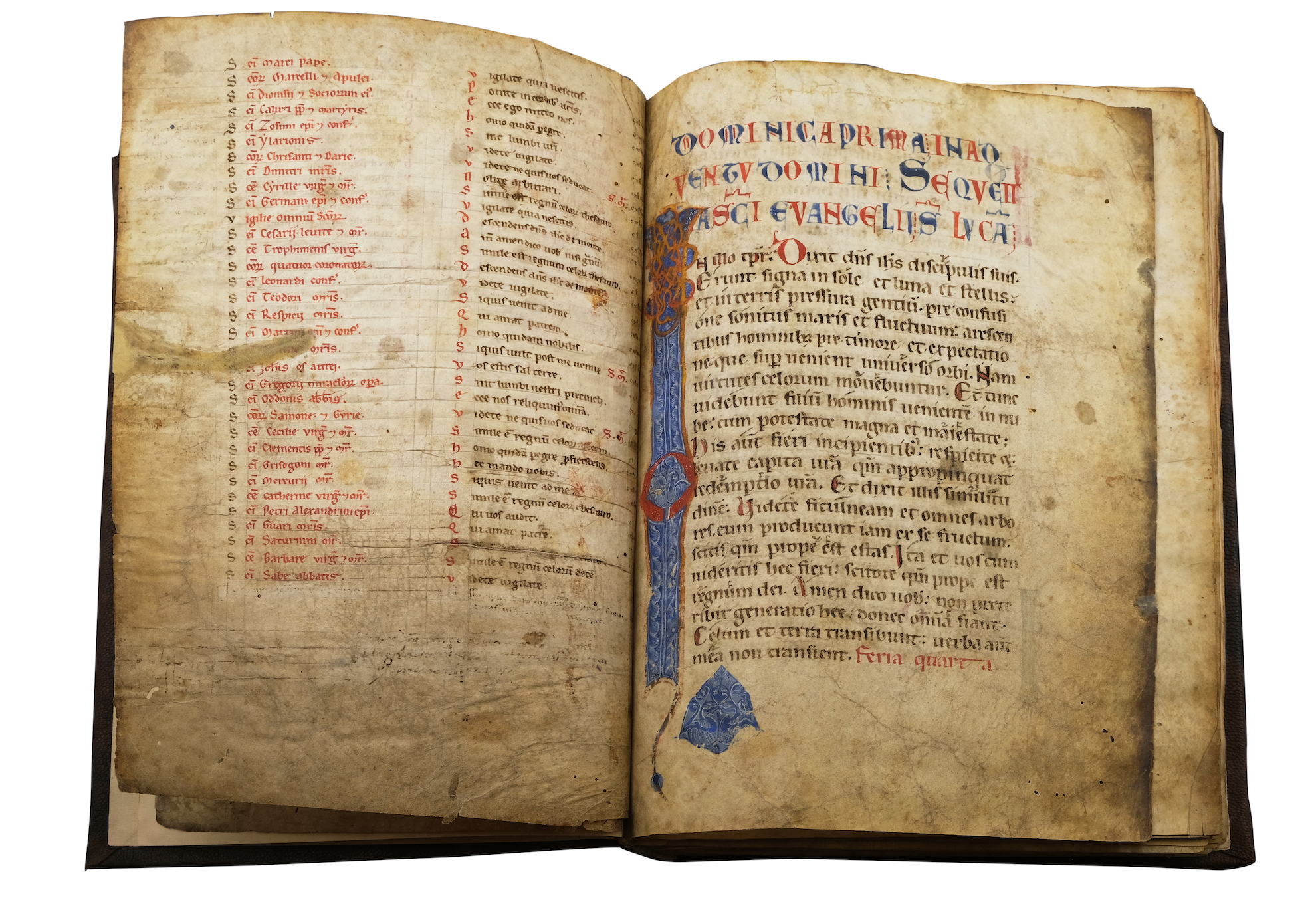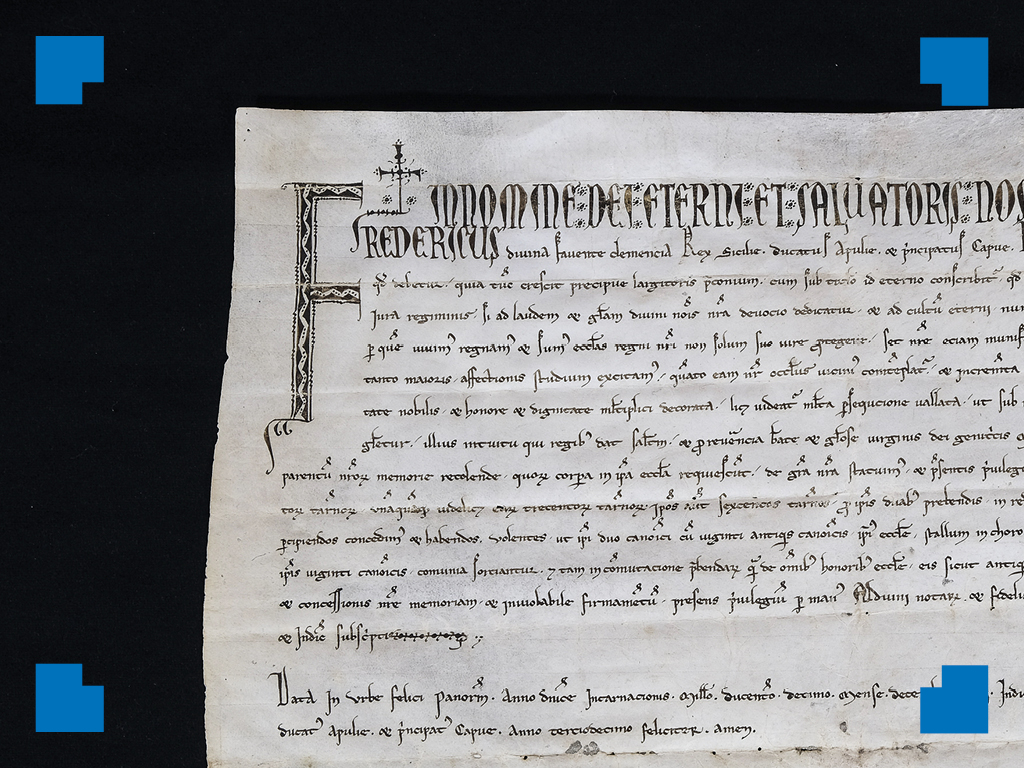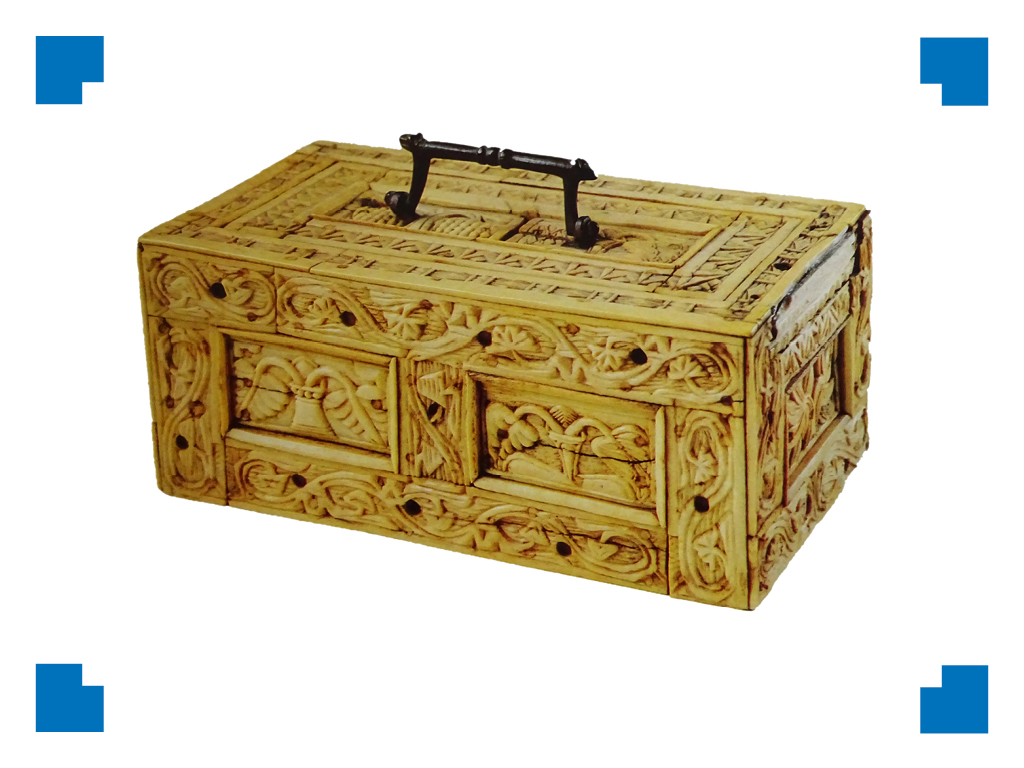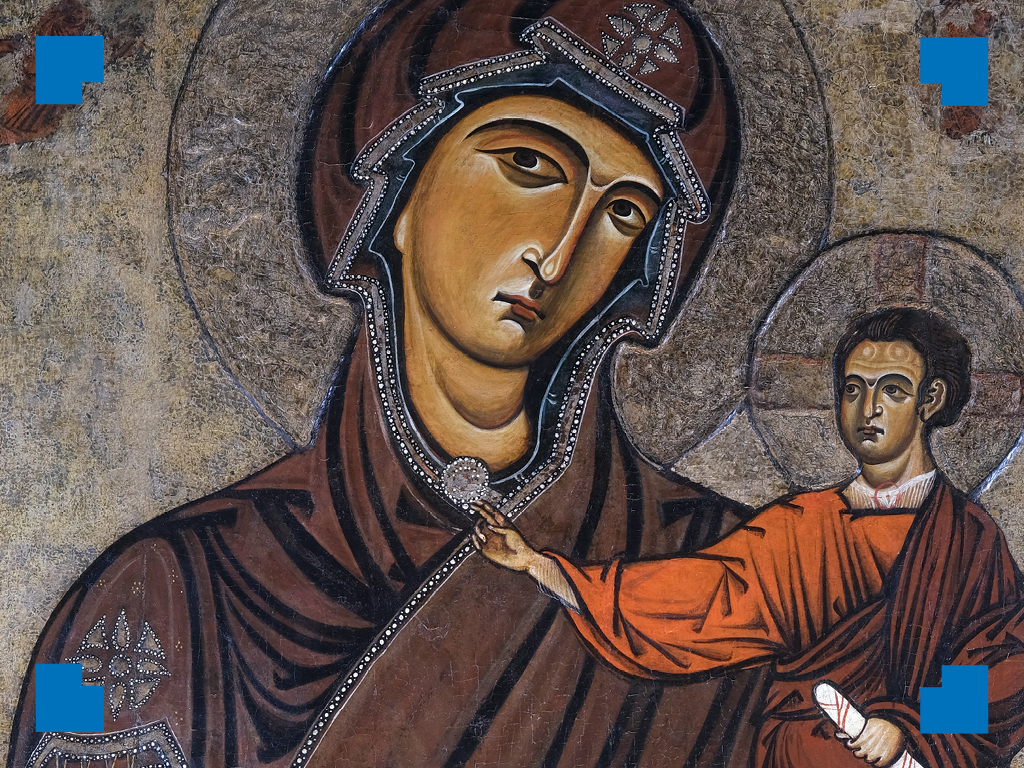
17. Evangelistary
Scriptorium of Monreale (?), last quarter of 12th c. – before 1189
Evangelistary
parchment manuscript (32×23 cm)
Monreale, “Ludovico II Torres” Library, XX E 7,
formerly ms. 8, from the Cathedral
The Evangelistary here exhibited (Focus cat. 17) comes from the library of the Benedictine monastery of Santa Maria la Nuova in Monreale (a town near Palermo). The library was built in 1183 by will of the same king who founded the complex, William II of Hauteville (nephew of Queen and Empress Constance).
The manuscript is particularly relevant for scholars in this field because it marks the passage from Norman to Swabian illumination, with letters characteristically prolonged with sprays and tails of animals in the so-called “kite” motifs.
The “kite” motif can be seen, for example, in the lower margin of the initial I (In illo tempore, i.e., “At that time”, the typical incipit of Evangelistaries) that introduces the reading from the Gospel of St. Luke on the first Sunday of Advent (the period in preparation for Christmas).
The codex, produced in Palermo or within the monastery of Monreale, can be dated in 1189, as the text records the oath of the bishop of Syracuse Lorenzo to the archbishop of Monreale Guglielmo, occurred in that year. The year before, Pope Clement III had granted King William II of Hauteville the promotion of the abbey to archiepiscopal see, thus obliging the bishops of the subject dioceses (so-called “suffragan”) of Catania and Syracuse to take an oath of allegiance.
Focus – Liturgical Books
The reading of the Gospels, and in general of the New Testament, took place in the Middle Ages through two different manuscripts, with similar names but different contents and functions: the Evangeliary and the Evangelistary.
In the Evangeliary, often for private use, the four canonical Gospels (Matthew, Mark, Luke, John) were transcribed in their entirety, sometimes followed by the Acts of the Apostles or other sacred texts (see the Evangeliary of Constance, cat. 30).
The Evangeliary, used by the community, collected only the excerpts from the Gospels that were read during the Eucharistic celebrations (masses) at various times during the liturgical year.
The Martyrology was a liturgical book (i.e., used during religious ceremonies) containing the feasts of the saints, ordered according to the calendar of the year. The name comes from the first compiler of this kind of text, Usuard, a Benedictine monk of the Abbey of Saint-Germain-des-Prés near Paris, who died around the year 875 and who dedicated it to the Holy Roman Emperor Charles the Bald.
The Sacramentary was a liturgical book from which the bishop or presbyter (priest), who celebrated Mass and administered the sacraments, read the texts of the prayers and the prescribed formulas.


